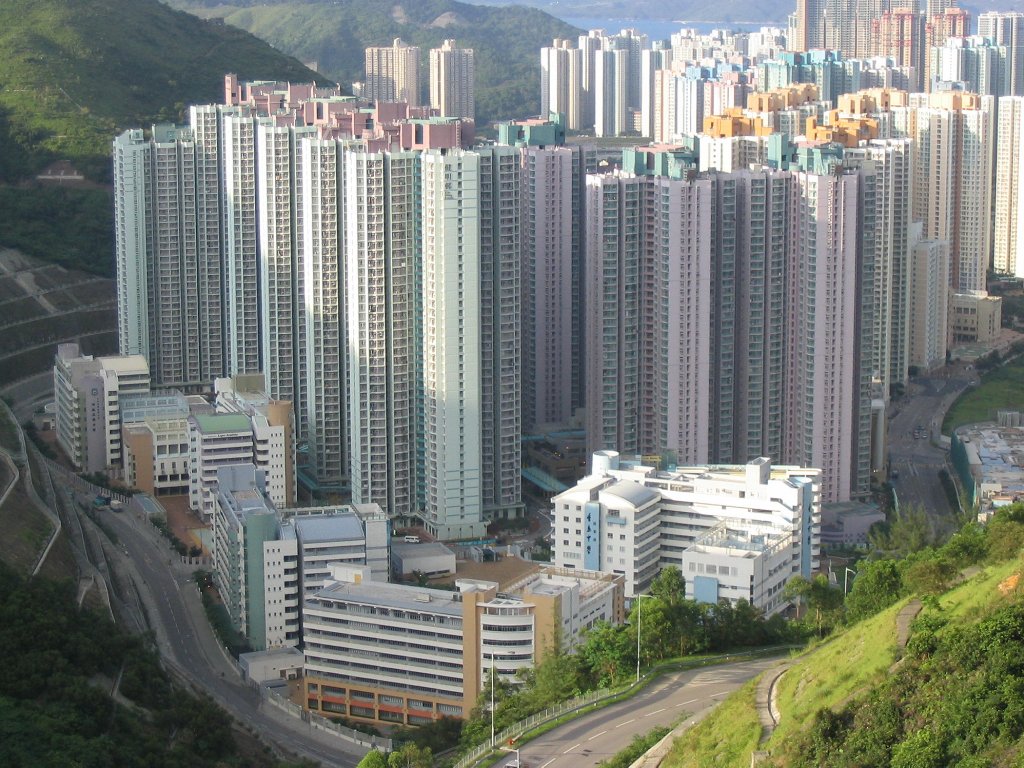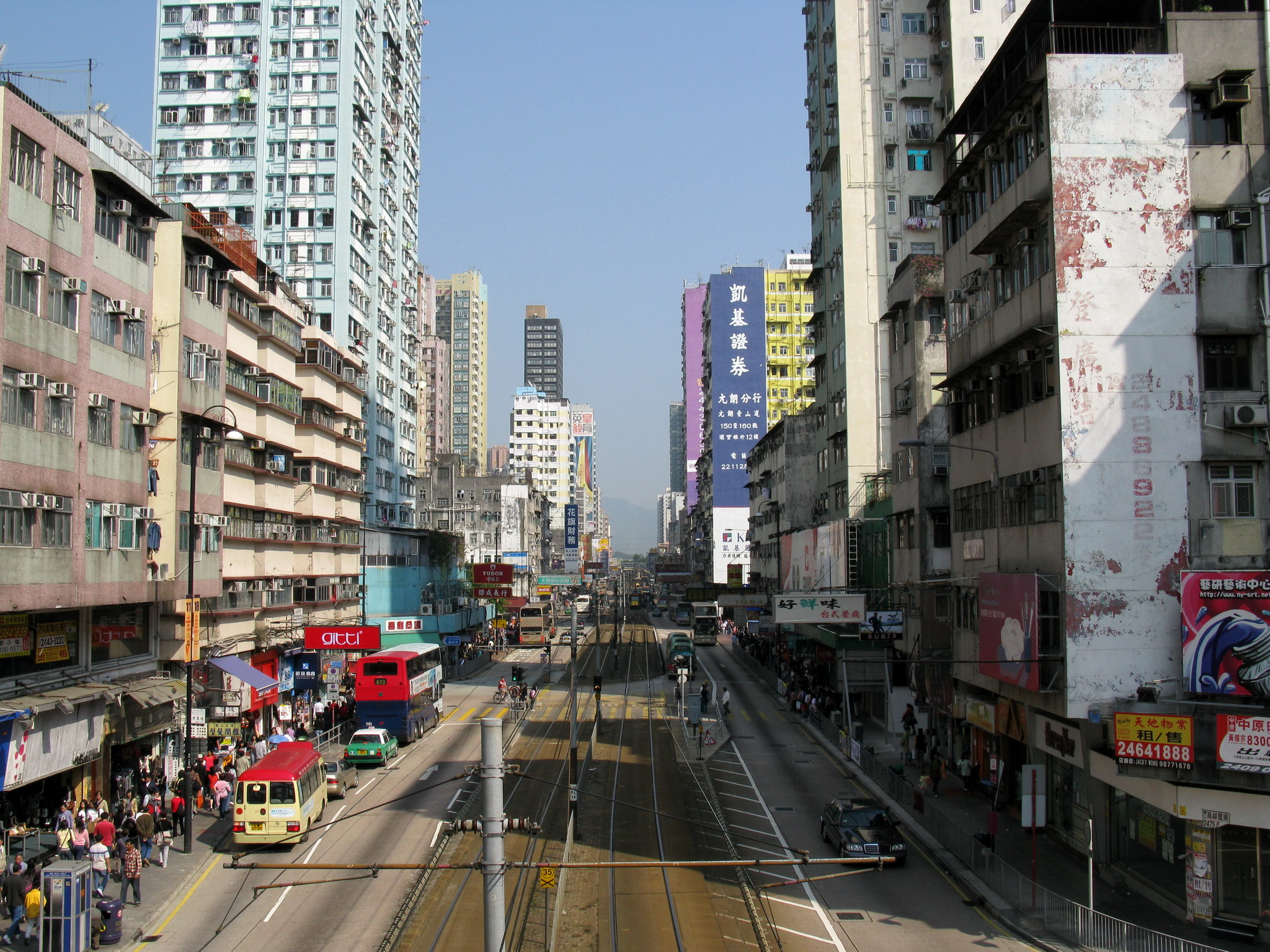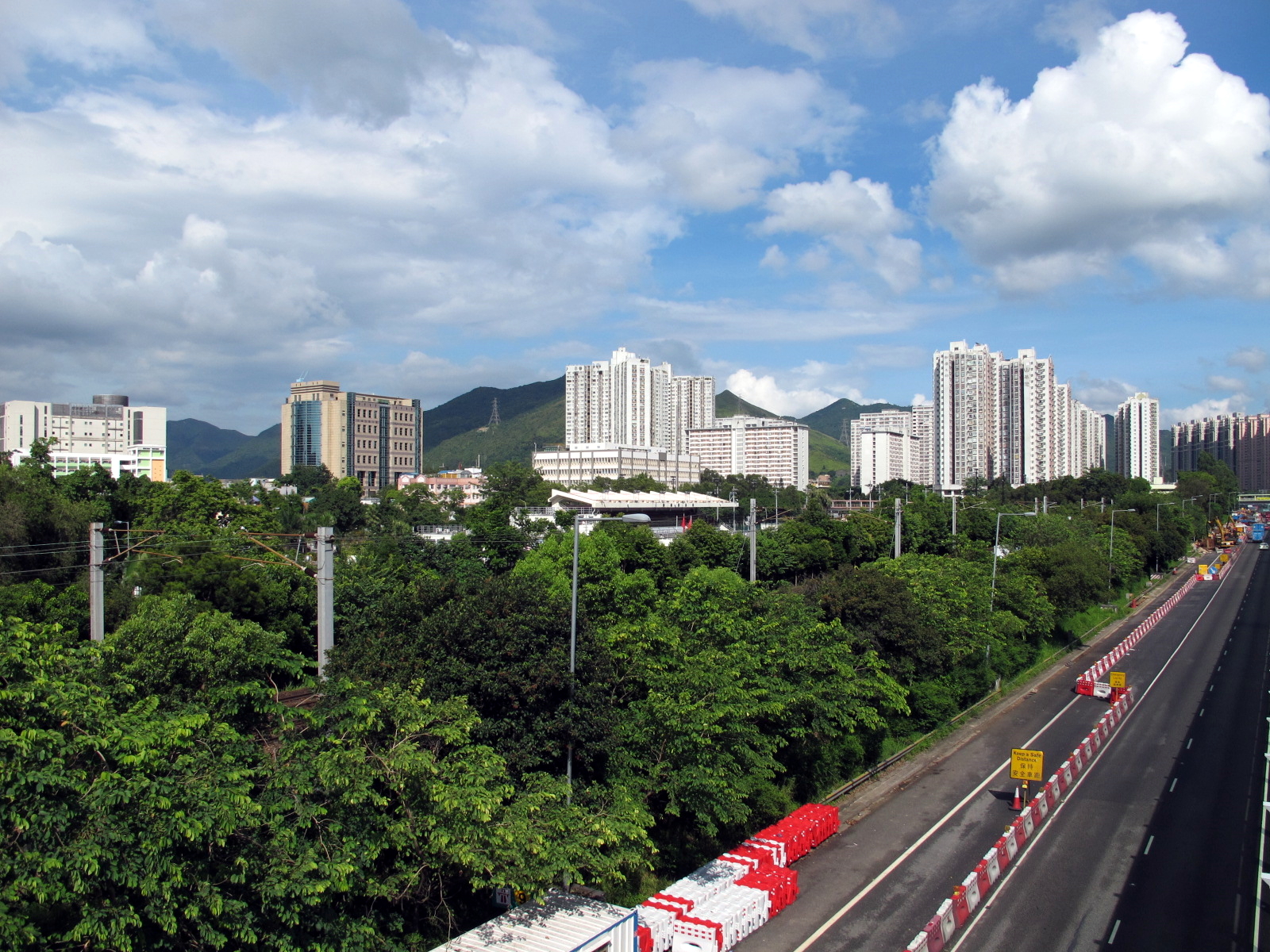|
Tenants Purchase Scheme
Tenants Purchase Scheme (TPS) is a scheme which allows tenants in public housing estates under the Hong Kong Housing Authority to purchase their flats. The price is set to be much lower than the market prices of private flats and Home Ownership Scheme (HOS) owing to the age of flats and restriction on selling. History The Scheme was announced in 1997 and formally launched a year later. It provided an opportunity for at least 250,000 public housing tenants to acquire their flats at affordable prices over a ten-year period with the ultimate aim of achieving 70% home ownership by 2007. In November 2002, in response to a weak property market which was allegedly being distorted by public housing sales schemes, it was decided to terminate the TPSStephen BrownShackles off ... it's time for real reform, The Standard, 14 November 2002 after the sale of the five estates under Phase 6B. The suspension of the HOS was announced at the same time. In June 2004, phase 6A was announced f ... [...More Info...] [...Related Items...] OR: [Wikipedia] [Google] [Baidu] |
Public Housing In Hong Kong
Public housing in Hong Kong is a set of mass housing programmes through which the Government of Hong Kong provides affordable housing for lower-income residents. It is a major component of housing in Hong Kong, with nearly half of the population now residing in some form of public housing. The public housing policy dates to 1954, after Shek Kip Mei Fire, a fire in Shek Kip Mei destroyed thousands of shanty town, shanty homes and prompted the government to begin constructing homes for the poor. Public housing is mainly built by the Hong Kong Housing Authority and the Hong Kong Housing Society. Rents and prices are significantly lower than those for Private housing estates in Hong Kong, private housing and are heavily subsidy, subsidised by the government, with revenues partially recovered from sources such as rents and charges collected from car parks and shops within or near the residences. Many public housing estates are built in the New towns of Hong Kong, new towns of the N ... [...More Info...] [...Related Items...] OR: [Wikipedia] [Google] [Baidu] |
Fu Shin Estate
Fu Shin Estate () is a mixed TPS and public housing estate in Tai Po, New Territories, Hong Kong, built on the reclaimed land of Tai Po Hoi. It consists of six residential blocks built in 1985. Some of the flats were sold to tenants through Tenants Purchase Scheme Phase 6B in 2005. Ming Nga Court () and Yee Nga Court () are Home Ownership Scheme housing courts in Tai Po near Fu Shin Estate, built in 1985 and 1993 respectively. History Lift plunge incident On 25 October 2008, a lift at Shin Nga House, Fu Shin Estate suddenly plunged 14 storeys, but no one was injured. This raised concerns on lift safety. The government A government is the system or group of people governing an organized community, generally a State (polity), state. In the case of its broad associative definition, government normally consists of legislature, executive (government), execu ... later confirmed the incident was caused by the failure of the counterweight pulley bearing, which caused the di ... [...More Info...] [...Related Items...] OR: [Wikipedia] [Google] [Baidu] |
Tseung Kwan O
Tseung Kwan O New Town, commonly known as Tseung Kwan O ( zh, t=將軍澳新市鎮, j=Zoeng1 gwan1 ou3 san1 si5 zan3), is one of the nine New towns of Hong Kong, new towns in Hong Kong, built mainly on Land reclamation in Hong Kong, reclaimed land in the northern half of Junk Bay in southeastern New Territories, after which it is named. Development of the new town was approved in 1982, with the initial population intake occurring in 1988. As of 2016, the town is home to around 396,000 residents. The total development area of Tseung Kwan O, including its industrial estate, is about , with a planned population of 445,000. Major residential neighbourhoods within the new town include Tsui Lam Estate, Tsui Lam, Po Lam, Hang Hau, Tseung Kwan O Town Centre, Tiu Keng Leng (also known by its English name Rennie's Mill) and Siu Chik Sha, etc. Administratively, the new town belongs to Sai Kung District in southeastern New Territories, although it is often incorrectly regarded as part of ... [...More Info...] [...Related Items...] OR: [Wikipedia] [Google] [Baidu] |
Tsui Lam Estate
Tsui Lam Estate () is a mixed TPS and public housing estate located to the west of Po Lam in Tseung Kwan O, New Territories, Hong Kong. It is the second public housing estate in Tseung Kwan O and is the only public housing estate in Tseung Kwan O not built on reclaimed land Land reclamation, often known as reclamation, and also known as land fill (not to be confused with a waste landfill), is the process of creating new land from oceans, seas, riverbeds or lake beds. The land reclaimed is known as reclamatio .... It has a total of eight residential blocks completed in 1988. Some of the flats were sold to tenants through Tenants Purchase Scheme Phase 6B in 2005. King Ming Court () is a Home Ownership Scheme housing court in Tseung Kwan O near Tsui Lam Estate. It has three residential blocks built in 1988 and is the only HOS court in Tseung Kwan O built at a hill, but not on reclaimed land. Houses Tsui Lam Estate King Ming Court Demographics According to the 2016 ... [...More Info...] [...Related Items...] OR: [Wikipedia] [Google] [Baidu] |
Sham Shui Po
Sham Shui Po () is an area of Kowloon, Hong Kong, situated in the northwestern part of the Kowloon Peninsula, north of Tai Kok Tsui, east of Cheung Sha Wan and south of Shek Kip Mei (). It is located in and is the namesake of the Sham Shui Po District. A predominately lower-income neighborhood, Sham Shui Po is one of the densest and most vibrant neighbourhoods in Hong Kong. It has a diverse mix of migrants from rural China, working-class families and seniors, with many living in Bedspace apartment, cage homes, subdivided flats and public housing in Hong Kong, public housing estates. Sham Shui Po has many lively street markets, electronics outlets, fabric stores, restaurants and food vendors. It is famous for Golden Computer Shopping Arcade for bargain electronics and accessories. History The discovery in 1955 of the Lei Cheng Uk Han Tomb Museum, Lei Cheng Uk Han Tomb indicates that as early as 2,000 years ago, there were Chinese people settled in what is now Sham Shui Po. ... [...More Info...] [...Related Items...] OR: [Wikipedia] [Google] [Baidu] |
Nam Cheong Estate
Nam Cheong Estate () is a public housing estate in Sham Shui Po, Kowloon, Hong Kong near Nam Cheong Park, Tung Chau Street Park and MTR Nam Cheong station. It is named from nearby Nam Cheong Street, a main street in Sham Shui Po District. It consists of seven residential blocks completed in 1989. In 2005, the estate was sold to tenants through Tenants Purchase Scheme Phase 6B. Houses Demographics According to the 2016 by-census, Nam Cheong Estate had a population of 4,847. The median age was 48.9 and the majority of residents (96.8 per cent) were of Chinese ethnicity. The average household size was 2.6 people. The median monthly household income of all households (i.e. including both economically active and inactive households) was HK$22,000. Politics Nam Cheong Estate is located in Nam Cheong West constituency of the Sham Shui Po District Council. It was formerly represented by Wai Woon-nam, who was elected in the 2019 elections The following elections were scheduled ... [...More Info...] [...Related Items...] OR: [Wikipedia] [Google] [Baidu] |
Yuen Long
Yuen Long is a town in the western New Territories, Hong Kong. To its west lie Hung Shui Kiu (), Tin Shui Wai, Lau Fau Shan and Ha Tsuen, to the south Shap Pat Heung and Tai Tong, to the east Au Tau and Kam Tin (), and to the north Nam Sang Wai. Name According to Gazetteer of Xin'an County (新安縣志) and other ancient maps, Yuen Long was first written as 圓蓢 (lit. Round Basin or Round lowland).Yuen Long Now & Then (n.d.), Hong Kong Public Library. Available at:https://www.hkpl.gov.hk/sc/common/attachments/hkcl/resources/resources_ml_yl.pdf Yuen Long refers to a large plain surrounded by a series of hills, starting from Oyster Hill (蠔殼山) in Ou Tau (凹頭) on the east and ending at Tai Tau Shan (大頭山) in Tuen Mun on the west, which is like a basin. Yuen Long is in the Shan Pui River Basin (山貝河流域). From the literal meaning, it can be inferred that Yuen Long was a swampy lowland with abundant water resources in ancient times. The Cantonese name Yu ... [...More Info...] [...Related Items...] OR: [Wikipedia] [Google] [Baidu] |
Tai Po
Tai Po is an List of areas of Hong Kong, area in the New Territories of Hong Kong. It refers to the vicinity of the traditional market towns in the area presently known as Tai Po Old Market or Tai Po Kau Hui () (the original "Tai Po Market") on the north of Lam Tsuen River and the Tai Po Hui (the current Tai Po Market; historically Tai Wo Shi, literally ''Tai Wo market'') on Fu Shin Street on the south of the Lam Tsuen River, near the old Tai Po Market railway station of the East Rail line, Kowloon-Canton Railway (British Section). Both market towns became part of the Tai Po New Town in the late 1970s and early 1980s. In present-day usage, "Tai Po" may refer to the area around the original market towns, the Tai Po New Town (), or the entire Tai Po District. Etymology In Chinese, the place, Tai Po (), was formerly written as . Treating the Chinese characters separately, the pronunciation of Po in the third tone () in Cantonese are shared with many words, not only Po in th ... [...More Info...] [...Related Items...] OR: [Wikipedia] [Google] [Baidu] |
Tsing Yi
Tsing Yi (), sometimes referred to as Tsing Yi Island, is an island in the New Territories of Hong Kong, to the northwest of Hong Kong Island and south of Tsuen Wan. With an area of , the island has been extended drastically by reclamation along almost all its natural shore and the annexation of Nga Ying Chau () and Chau Tsai (Tsing Yi), Chau Tsai. Three major bays or harbours, Tsing Yi Tong, Tsing Yi Lagoon, Mun Tsai Tong, and Tsing Yi Bay () in the northeast, have been completely reclaimed for New towns of Hong Kong, new towns. The island is generally zoned into four Quarter (country subdivision), quarters: the northeast quarter is a residential area, the southeast quarter is Tsing Yi Town, the southwest holds heavy industry, and the northwest includes a recreation trail, a transportation interchange and some dockyards and ship building industry. The island is in the northwest of Victoria Harbour and part of its coastline is subject to the Protection of the Harbour Ordinance. ... [...More Info...] [...Related Items...] OR: [Wikipedia] [Google] [Baidu] |
Hong Kong Housing Authority
The Hong Kong Housing Authority (HA) is the main provider of public housing in Hong Kong. It was established in April 1973 under the Housing Ordinance and is an government agency, agency of the Government of Hong Kong. In the same year, the Resettlement Department and the Building Section of the Urban Services Department were merged to form the Housing Department, which acts as the Housing Authority's executive body. History The modern Housing Authority was founded in 1973. In 2005, most Housing Authority-owned shopping centres and car parks were controversially divested to The Link REIT. A citywide scandal erupted in 2015 after 2015 Hong Kong heavy metal in drinking water incidents, heavy metals were found in the water supply of some housing estates, schools, and private residential buildings. The contamination was first identified at Public housing estates in the Kai Tak development area#Kai Ching Estate, Kai Ching Estate, opened in 2013. A task force found that the contam ... [...More Info...] [...Related Items...] OR: [Wikipedia] [Google] [Baidu] |
Po Lam Estate
Po Lam Estate () is a mixed Tenants Purchase Scheme, TPS and public housing estate in Tseung Kwan O, New Territories, Hong Kong, near Metro City (Hong Kong), Metro City and MTR Po Lam station. It is the first public housing estate in Tseung Kwan O and has a total of seven residential blocks with 5,272 units. Some of the flats were sold to tenants through Tenants Purchase Scheme Phase 6A in 2004. Ying Ming Court () and Yan Ming Court () are Home Ownership Scheme housing courts in Tseung Kwan O near Po Lam Estate, built in 1989 and 1990 respectively. Houses Po Lam Estate Ying Ming Court Yan Ming Court Demographics According to the Population Census in Hong Kong, 2016 by-census, Po Lam Estate had a population of 15,319, Ying Ming Court had a population of 5,058 while Yan Ming Court had a population of 4,604. Altogether the population amounts to 24,981. Politics For the 2019 Hong Kong local elections, 2019 District Council election, the estate fell within two constituencies. P ... [...More Info...] [...Related Items...] OR: [Wikipedia] [Google] [Baidu] |
Fanling
Fanling ( zh, t=粉嶺; also spelled Fan Ling or Fan Leng) is a town in the New Territories East of Hong Kong. Administratively, it is part of the North District. Fanling Town is the main settlement of the Fanling area. The name Fanling is a shortened form of Fan Pik Leng (). The area has several public and private estates. Northwest of Fanling is Sheung Shui and southeast is Tai Po. Areas Part of Fanling–Sheung Shui New Town, Fanling Town includes Luen Wo Hui (), the marketplace of Fanling before urban development in the area, and Wo Hop Shek (), where an uphill public cemetery is located. Fanling North is one of three new development areas currently being planned for North District, in parallel with Ta Kwu Ling and Kwu Tung North. Sights * Fanling Wai (), a walled village. * Fung Ying Seen Koon (), a Taoist temple. * Lung Yeuk Tau Heritage Trail * Tao Heung Foods of Mankind Museum (relocated to Fo Tan in 2008) Housing estates Public and private housing e ... [...More Info...] [...Related Items...] OR: [Wikipedia] [Google] [Baidu] |





